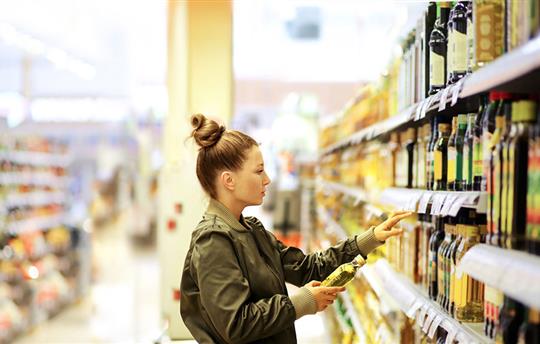Signage Localization — Why It Matters to the Future of In-Store CX
9/29/2022 Jay Schumacher

Maintaining a brick and mortar presence is costly — so maximizing that investment is critical. And, more than ever, the true value of that presence is anchored on a consumer experience that inspires. These experiences ultimately need to drive not just immediate sales, but longer term brand loyalty.
In fact, research by The Economist Group found marketing and communication executives worldwide agree: customer experience will be the leading driver of their company’s success over the next five years [source].
For physical retail locations, the in-store experience plays an essential role in continued success and relevancy. A few keys to creating these meaningful in-store experiences are:
- Timely and relevant messaging
- Innovative displays and experiences
- Store and product layouts designed for the shopper journey
- Store team members personalizing the in-store experience
Now, consider these points in the context of in-store signage and displays. There are some critical capabilities and technologies that emerge as necessities — i.e., variable composition engines and robust store profiling — for the future of retail signage.
For retailers challenged by manual non value-add work in creative, lack of localization to stores, waste at the store level, and inefficient (and inconsistent) in-store execution, the combination of these two solutions creates a marketing opportunity worth notice.
Defining key terms
Variable composition signage: the practice of automating creative development workflows to create signage based on templates and libraries of images and content, that then uses data-driven workflows and business rules to bring it all together and generate print or display ready art.
Store profiling: a technology and process solution set for a) housing and maintaining any possible descriptive attribute or characteristic for a store, and then b) applying those attributes to determine what messaging and signage should be deployed to each store.
4 benefits of variable composition and store profiling in the retail space
Personalized, localized messaging — at the store level. By leveraging the right technologies, marketers are empowered to not only profile key store attributes but also house store-level data points and business rules to apply to their promotional displays and messaging.
This localization drives relevancy, which can mean any number of things in this context: product tie-ins specific to a store or region, store offers, local events, pricing, and more. Further, store characteristics can be used to drive the exact right signage for each location, based on attributes like:
- Size of the store
- Number of aisles
- Different products or brands at the location
- Available fixture or sign positions
- Local market demographics
- Local laws and regulations
Speed to market. By automating workflows, marketing teams can focus on defining and designing impactful experiences, while the right technologies take care of the heavy lifting (aka plugging in store-level specifics). This drastically improves speed to market, allowing retailers to rapidly respond to changing competitive landscapes and ensure relevancy of their messaging.
Reducing signage waste. There is inherent waste in sending signs to a store that the store doesn’t need. Think about it: team members sift through generic signage to figure out what applies to their location and what doesn’t. This practice of picking and choosing can result in overlooked signage, time wasted, increased physical waste, and non-compliant promotional execution.
Store-specific kits empower in-store team members. Having the right kit documentation can make a big difference in the time spent unpacking a kit and correctly setting up signage. Packing slips with imagery — put up and take down instructions integrated with visual schematics or plan-o-grams — can be designed to ensure the team members quickly and accurately execute the marketing kit.
These kit documents can be driven by store profiles to each store’s preferences and layout. Store profiles can also be used to drive how a kit is physically packed to optimize each store’s deployment process.
Building your store of the future
Variable composition signage and store profiling offer a robust approach for improving localization and relevancy for retailers and their physical locations. These solutions create the opportunity to eliminate unnecessary overhead, free up creative talent and heighten in-store engagement.
Retailers are challenged every day with reimagining how to best optimize their in-store environments to create memorable, engaging customer experiences. Together, variable composition toolsets, robust store profiling, and store-specific marketing kits provide retailers an avenue to do just that.
Jay Schumacher is Vice President of Client Services and Solutions for RRD Signage and Displays.